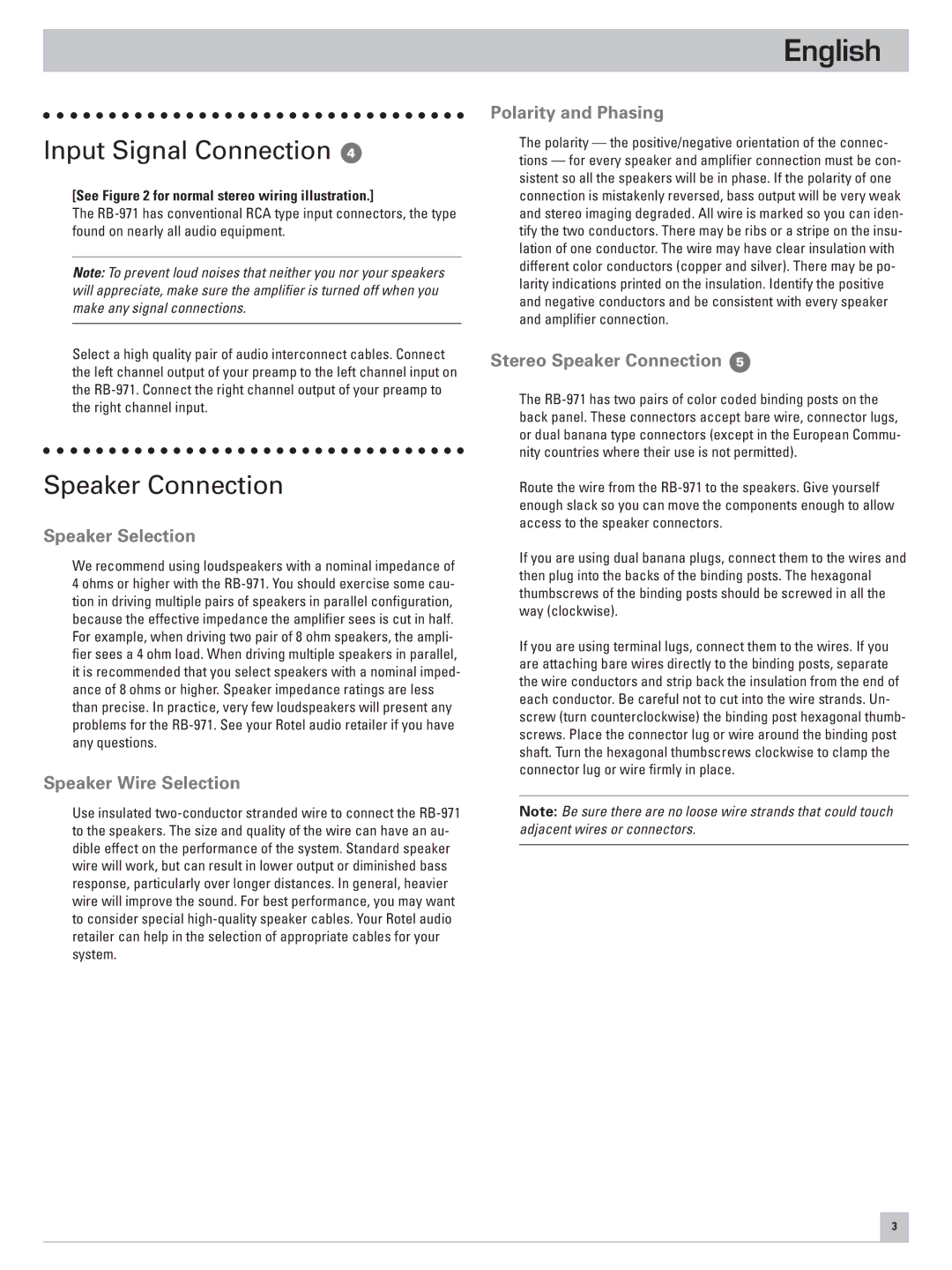
Input Signal Connection 4
[See Figure 2 for normal stereo wiring illustration.]
The
Note: To prevent loud noises that neither you nor your speakers will appreciate, make sure the amplifier is turned off when you make any signal connections.
Select a high quality pair of audio interconnect cables. Connect the left channel output of your preamp to the left channel input on the
Speaker Connection
Speaker Selection
We recommend using loudspeakers with a nominal impedance of
4ohms or higher with the
Speaker Wire Selection
Use insulated
English
Polarity and Phasing
The polarity — the positive/negative orientation of the connec- tions — for every speaker and amplifier connection must be con- sistent so all the speakers will be in phase. If the polarity of one connection is mistakenly reversed, bass output will be very weak and stereo imaging degraded. All wire is marked so you can iden- tify the two conductors. There may be ribs or a stripe on the insu- lation of one conductor. The wire may have clear insulation with different color conductors (copper and silver). There may be po- larity indications printed on the insulation. Identify the positive and negative conductors and be consistent with every speaker and amplifier connection.
Stereo Speaker Connection 5
The
Route the wire from the
If you are using dual banana plugs, connect them to the wires and then plug into the backs of the binding posts. The hexagonal thumbscrews of the binding posts should be screwed in all the way (clockwise).
If you are using terminal lugs, connect them to the wires. If you are attaching bare wires directly to the binding posts, separate the wire conductors and strip back the insulation from the end of each conductor. Be careful not to cut into the wire strands. Un- screw (turn counterclockwise) the binding post hexagonal thumb- screws. Place the connector lug or wire around the binding post shaft. Turn the hexagonal thumbscrews clockwise to clamp the connector lug or wire firmly in place.
Note: Be sure there are no loose wire strands that could touch adjacent wires or connectors.
3
